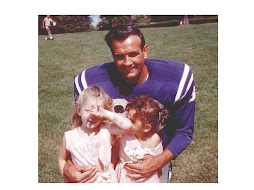 |
| Town Square Rzeszow |
We arrived in Rzeszow (don't even try and pronounce it) following an extremely long and emotional day (we dropped our guide at his family home.) Navigating the old city center to find our hotel-even with a GPS and detailed Google maps-proved a major challenge. In the end, we succeeded through the kind help of a police escort-our first sign that we were in a special place. And special it was!
 |
| New Synagogue Rzeszow |
 |
| Old Synagogue Rzeszow |
Our hotel looked out over the spectacular, colorful square seen above and was crowded with enthusiastic locals enjoying a sun-drenched drink while watching World Cup soccer on strategically placed huge screens. the local tourist center had already closed but there was plenty of light so we followed our interpretation of the Polish map to find the two rebuilt synagogues. I always find it amusing to see the "old" synagogue and the "new" nearly side-by-side. These two were huge and spoke to the large population of Jews in the region for centuries as well as their relative prosperity and freedom. Again I was directly confronted with the sweeping destruction Hitler promulgated in just a few short years. A small plaque on the new synagogue gave a poignant tribute.

We slept and ate well, rising early for what we knew would be another long day. Our guide rejoined us and we headed due south to Tyczyn, the family home of my grandfather. The town dates back to 1398 and underwent the usual sequential sacking and pillaging through the ages ultimately becoming a part of Galicia (of the Austro-Hungarian empire). The town square sat on a small hill, commanding control over the surrounding rural villages. The Stryj River was nearby and served multiple purposes including swimming for the local boys! We had spent some of our many driving hours reading a memoir of one of his brothers and had already learned about the remarkable mobility of this community-both during times of distress (pogroms) and for business (trading and commerce). Unlike the villages we had visited the day before, the Jewish population of Tyczyn was relatively small (under 1000) and in the minority (though there were still two competitive synagogues). As elsewhere in this region, the Jews were primarily shopkeepers.
 |
| Rynek Tyczyn |
The town square was small and shaded, anchored by the Rynek (town hall). Within the town hall we found the library where an extremely helpful woman showed us her impressive section of local history books. While many were in Polish, just looking at the photos was worth the time though there was great focus on the many churches and Christian life. Then suddenly she seemed to remember something and pulled out what looked like a college term paper-our guide grinned and translated:
The Jews of Tyczyn! Here was gold-an entire treatise, even if it was in Polish. After a set of negotiations, she agreed to let us take the manuscript to the one nearby copier so we could have it properly translated back home (I did leave my passport in exchange). Just as we were about to leave with our precious document, she called us back, with the even more startling news that the author was still alive and living in Tyczyn! More chaos ensued as our guide acquired the telephone number, called the author, was declined a visit. Clutching our precious sheets, we emerged back onto the square, found the copier (hidden in the back of a tiny variety store) and began to circle the square to identify the crumbling remains of the synagogue when the next miracle struck-for some inexplicable reason, the author now called back and agreed to a visit!
For the next hour we were thoroughly entertained by a remarkably healthy 90 year old who managed through a combination of English, German and Polish to relate many memories about his life in the village. During WWII he had been forced to serve in the German army (having been a Polish army officer before the occupation) but after being wounded, returned to witness some of the final carnage extracted upon the Jews. His property bordered two important landmarks-one was a dilapidated, abandoned, crumbling home that he identified as belonging to the Tuchmans who were cousins of my mother! Apparently no one wanted to disturb the building as it was known the last inhabitant were the mother and children who had been shot by the Nazis right near the village. The second was the Jewish cemetery. While the cemeteries we had seen in Smigrod and Dukla were chilling, the one in Tyczyn was overwhelmingly somber and distressingly sad. The large plot is fenced and locked, access is almost impossible, and it is clear there is little care given to the place. Through the fence, we could just glimpse one remaining tombstone-standing in silent witness and memorial.
 |
| Cemetery Tyczyn |
We thanked our gracious guest, understanding just how special it was to have met and talked with someone who walked the streets with my grandfather, who visited my great-grandfather's store and who had taken the time to write down what could have become the lost history of the Jews of this small town. As we left, Mom took a few mournful photographs of the Tuchman house, we claimed the copies of the manuscript, retrieved my passport and headed out of town. A long drive was ahead of us-it would give us both time to ponder another rewarding, revealing but emotional day in eastern Poland.







Sounds like a wonderful trip!
ReplyDeleteMoving story but you don't mention the family names. I lived in Tyczyn, knew most of the people(including Tuchmans) and was moved from there to the Rzeszow ghetto in 1942. Read my book: "The 23rd Psalm. A Holocaust Memoir."
ReplyDeleteGeorge Salton
gsalton@aol.com